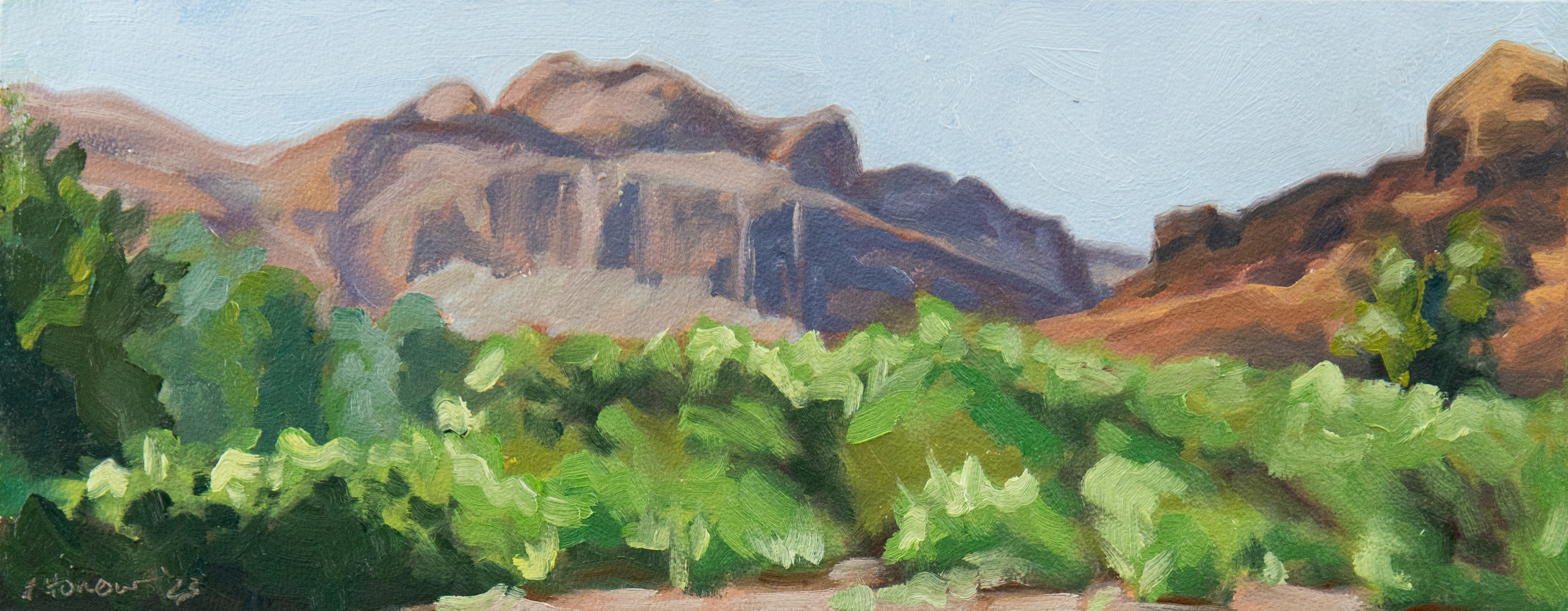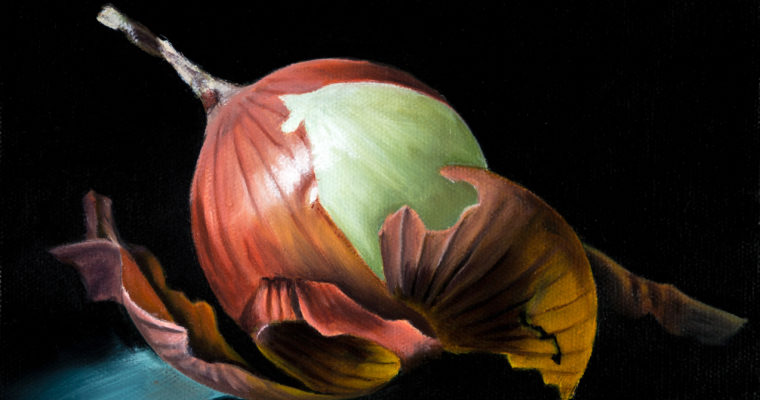
There isn’t much to say about this painting. It’s the 4th of 9 yellow onion paintings I’m working on. It didn’t give me much trouble, but most of my paintings lately haven’t. I think I’ve officially reached a point where I can quickly and easily knock out a small still life painting. That can only mean I need to up the ante and try something more challenging. I was thinking I would start out by doing a large still life since I’m comfortable with the subject and then once I feel ok doing a large painting I will change-up my subject.
The Problem with Alizarin Crimson (PR83)

Call me naive, but I had no clue alizarin crimson was a fugitive color until last week (even though the tube is clearly marked as “Permanence B”). Or even what a fugitive color was. A fugitive color is one that fades, btw.
This is the second major issue I’ve had with this color over my years of painting. The first was the complete inability to mix a clean purple. That led me down the color rabbit hole I suppose. It opened my eyes to color temperatures and dirty colors. I’m embarrassed to admit that it hadn’t occurred to me before that a red could be anything but warm and the idea that a color from the tube could be “dirty” was silly. But try mixing a purple with a red that contains yellow and you’re setting yourself up for some frustration. I wasn’t blind to the issues, but I didn’t know that was what I was doing and I was missing some key information. Now that I’m more aware of the properties of my colors, I’m far more successful at mixing the color I’m after.
I really wish I would’ve looked into color theory sooner. I thought it was all about primary, secondary, etc colors. I knew basic color mixing, but didn’t realize there was a whole other level to it. It’s that other level that no one seems to talk about, but is vitally important to precise color mixing.

Anyway, what brought all this up was a YouTube video I came across by Walcott fine Arts. In his video about reds, he said he never uses Alizarin Crimson, which I thought was odd. He explained that it isn’t light fast and recommended to substitute it for Permanent Madder Deep by Rembrandt. I did more research, and sure enough, it’s a very well documented fader. I scraped the Alizarin crimson off my palette that night and order the substitute he recommended. It just made sense to abandon it.
What bothers me is that I’ve been using this color for years. It was recommended to me by my first oil painting teacher in college so I bought it. No disclaimers about how it wouldn’t last or make ugly purples. Ugh college. Other than a bare bones introduction to oil painting, which I’m grateful for, I could really have used some more useful education than what I received. Nowhere, was there a class on color theory, business, building/prepping canvas, etc. Things that I actually would need. Instead, I spent countless class hours drawing perspective lines and ellipses. Seriously, I learned that stuff in elementary school.
Anyway, I hope I opened some eyes to the disadvantages of Alizarin Crimson (specifically pigment #PR83). If you’re already using a permanent version, great! If not, I suggest switching to a permanent version because I’m sure your art is awesome and it would really suck to see it fade with time.


Leave a Reply